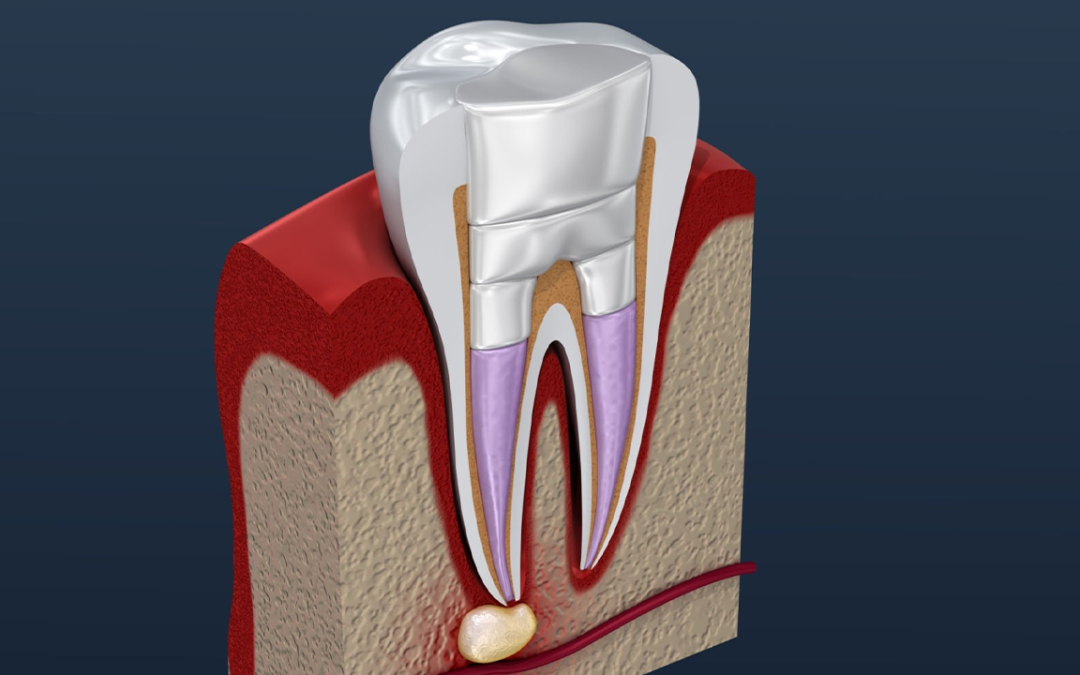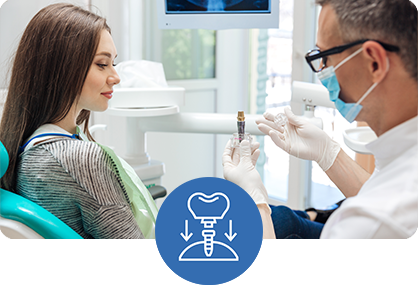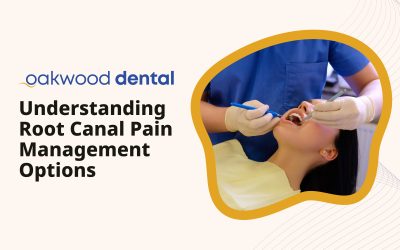Key Takeaways
- Advanced 3D imaging technologies provide unprecedented diagnostic precision for complex root canal cases
- Microscope-enhanced endodontics improves treatment success rates by up to 94% through superior visualization
- CEREC technology reduces treatment time by 60% with same-day crown fabrication for endodontically treated teeth
- Modern rotary instrumentation systems decrease procedural errors by 74% compared to traditional hand files
- Advanced irrigation technologies improve disinfection efficacy by reaching 98% of canal irregularities
- Digital treatment planning and guided approaches make previously challenging cases more predictable
- Patient comfort technologies have transformed root canal therapy into a virtually painless procedure
Introduction to Modern Endodontic Technology
Endodontic treatment has changed a lot in recent years, moving from old-fashioned procedures to high-tech approaches. Modern endodontic technology has changed how dentists diagnose, plan, and perform root canal treatments, making them more efficient, comfortable, and successful. Endodontics focuses on treating the dental pulp and tissues around tooth roots. With new technology, dentists can now save natural teeth that might otherwise need to be pulled out, keeping your bite aligned and letting you chew normally while getting rid of pain and stopping infections from spreading.
This article explores the big benefits that modern endodontic technology brings to dental care, from better diagnosis to improved treatment results. We’ll look at how these advances help both dentists and patients, making root canal therapy easier and more comfortable for everyone. The use of cutting-edge technologies has changed what was once a feared dental procedure into a reliable, efficient treatment with success rates over 95% in many practices. These innovations not only save natural teeth but also improve patients’ overall oral health and quality of life by avoiding extraction and replacement with artificial teeth.
Advanced Diagnostic Imaging Technologies
Good endodontic treatment starts with accurate diagnosis. Modern imaging technologies have changed our ability to see dental structures with amazing clarity and precision. These advanced systems help dental professionals find problems that might have been missed with traditional X-rays, greatly improving treatment planning and results for all types of endodontic cases, from simple to complex.
3D Cone Beam Computed Tomography (CBCT)
CBCT scanning is a big step forward in dental imaging. Unlike old 2D X-rays, CBCT creates detailed three-dimensional images of teeth, soft tissues, nerve pathways, and bone. This complete visualization helps dentists:
- Find the exact location and size of infection with sub-millimeter accuracy
- Detect extra root canals that might be missed with regular imaging, especially in complex molar cases where MB2 canals are present in up to 93% of upper first molars
- See complex root anatomy and potential problems like severe curves, calcifications, or resorptive defects
- Plan treatment with greater precision, reducing procedural complications by up to 70%
- Assess the relationship between roots and important anatomical structures like the inferior alveolar nerve or maxillary sinus
Digital Radiography
Digital radiography has replaced traditional film-based X-rays in modern endodontic practices. This technology offers many advantages:
Significantly reduced radiation exposure compared to conventional X-rays, with dose reductions of 50-80% while maintaining diagnostic quality. It provides instant image acquisition without chemical processing, saving appointment time and improving workflow efficiency. There’s enhanced image quality with tools for contrast adjustment and magnification, allowing for detection of small pathologies like early periapical lesions. Digital radiography also offers easy storage and retrieval for monitoring treatment progress and communicating with referring dentists. It’s environmentally friendly by eliminating chemical waste and reducing the carbon footprint of dental practices. Plus, digital enhancement features allow for measurement, annotation, and side-by-side comparison of images over time.
CEREC Technology and Same-Day Restorations
One of the biggest advances in modern dentistry is CEREC technology, which has changed the restoration phase of endodontic treatment. After a root canal procedure, teeth often need crowns or other restorations to protect them from breaking and ensure long-term success. CEREC technology has revolutionized this important final step by allowing immediate, definitive restoration of endodontically treated teeth, eliminating the vulnerable temporary phase that historically led to many treatment failures.
The CEREC Advantage in Endodontic Cases
CEREC technology allows dental professionals to design, make, and place ceramic restorations in a single appointment. This offers several benefits for endodontic patients:
It eliminates the need for temporary crowns, which can leak and potentially recontaminate the root canal system, reducing the risk of bacterial reinfection by up to 87%. CEREC reduces the number of appointments, saving time for busy patients and decreasing the overall treatment period by 2-3 weeks. It provides immediate protection for endodontically treated teeth, significantly reducing the risk of fracture during the vulnerable post-treatment period. The technology creates highly accurate restorations that fit precisely, with marginal gaps averaging only 25-40 microns compared to 100+ microns with traditional techniques. It offers superior aesthetics with metal-free, tooth-colored materials that closely mimic natural tooth appearance and translucency. CEREC also enables conservative preparation designs that preserve more healthy tooth structure, particularly important for endodontically treated teeth.
Microscope-Enhanced Endodontics
The operating microscope has revolutionized endodontic practice by providing unprecedented visualization of the complex root canal system. This technology has transformed what was once a procedure performed largely by feel into a precise, visually guided treatment. The introduction of surgical microscopes into endodontics represents one of the most significant advances in the specialty, enabling practitioners to address anatomical complexities that were previously unmanageable and substantially improving treatment outcomes across all types of cases.
Benefits of Microscope-Enhanced Visualization
Endodontic microscopes offer magnification ranging from 3x to 30x, allowing endodontists to:
Locate and treat all canal systems, including accessory canals that might otherwise be missed, increasing the detection of MB2 canals in maxillary molars by up to 62%. Identify tiny fractures that could compromise treatment success, enabling early intervention or appropriate case selection. Remove all infected tissue with greater precision, improving cleaning of the canal system by up to 35% compared to non-microscope techniques. Preserve healthy tooth structure through conservative access preparation, maintaining structural integrity of the treated tooth. Perform microsurgical procedures with enhanced accuracy, improving success rates of apicoectomies from 60% to over 90% in many studies. Visualize calcified canals that might otherwise require excessive dentin removal or risk perforation.
Rotary Instrumentation and Advanced Canal Preparation
Traditional hand files for cleaning and shaping root canals have been largely replaced by advanced rotary and reciprocating systems. These motorized instruments, typically made of nickel-titanium alloys, offer amazing flexibility and cutting efficiency. The development of these systems over the past twenty years has dramatically transformed the mechanical aspects of root canal treatment, making procedures faster, more predictable, and less technique-sensitive while preserving the natural canal anatomy more effectively than ever before.
Modern rotary instrumentation systems provide numerous benefits. They offer more consistent and predictable canal shaping with standardized tapers and diameters, reducing operator variability by up to 68%. Treatment time is reduced, enhancing patient comfort by decreasing appointment duration by 30-50% compared to hand instrumentation. These systems are better at maintaining original canal anatomy, particularly in curved canals where transportation is reduced by up to 74%. There’s decreased risk of procedural errors such as ledging, transportation, or perforation, with complication rates reduced from 10-15% to 2-5%. Cleaning efficiency is improved, especially in curved canals where debris removal is enhanced by the mechanical action of rotary motion. Operator fatigue is reduced, allowing for more focused treatment and the ability to manage multiple cases with consistent quality. Patient comfort is enhanced due to smoother, more efficient instrumentation with less apical extrusion of debris.
Irrigation Technologies and Enhanced Disinfection
Successful endodontic treatment depends not only on mechanical cleaning but also on effective disinfection of the root canal system. Modern endodontic technology has introduced advanced irrigation systems that significantly improve the elimination of bacteria and debris from complex canal anatomies. These innovations address one of the most challenging aspects of endodontic therapy: achieving thorough disinfection of areas inaccessible to mechanical instrumentation, which can harbor bacteria and lead to persistent or recurrent infections if not properly addressed.
Ultrasonic Activation
Ultrasonic activation represents a major advancement in irrigation techniques. It creates acoustic streaming and cavitation effects that improve irrigant penetration by up to 200% compared to conventional needle irrigation. It enhances removal of debris from canal irregularities and isthmuses, reaching areas that make up to 35% of the canal system volume. This technology improves the effectiveness of antimicrobial solutions by activating them at frequencies that enhance their chemical properties. It facilitates removal of smear layer for better sealer adaptation, improving the hermetic seal by up to 45%. Ultrasonic activation also activates irrigants in areas inaccessible to mechanical instrumentation, such as lateral canals and apical deltas. It generates heat that enhances the dissolving capability of sodium hypochlorite, increasing its tissue dissolution capacity by up to 100%.
3D Obturation Systems
After thorough cleaning and shaping, the root canal system must be completely sealed to prevent reinfection. Modern obturation (filling) techniques have evolved from traditional methods to provide more consistent, three-dimensional sealing of the entire canal system. These advanced systems address the limitations of conventional obturation methods, which often failed to adequately seal complex anatomical variations like lateral canals, isthmuses, and apical deltas that can harbor residual bacteria and lead to treatment failure.
Thermoplasticized gutta-percha systems heat gutta-percha to create flowable material that adapts to canal irregularities. They provide better adaptation to canal walls and anatomical variations, with studies showing up to 95% filling of lateral canals compared to 35% with cold lateral condensation. These systems offer more complete filling of lateral canals and isthmuses, areas that make up to 30% of the canal system in posterior teeth. They improve sealing of the apical foramen, reducing microleakage by up to 60% compared to traditional techniques. The risk of voids or gaps in the filling material is reduced, with void volume decreased by up to 75% in comparative studies. These systems create a more homogeneous mass of filling material that provides better long-term stability, and they decrease procedural time compared to traditional lateral condensation techniques.
Digital Treatment Planning and Guided Endodontics
The integration of digital technologies has transformed treatment planning and execution in endodontics. Computer-guided approaches enhance precision and predictability, particularly in challenging cases. These technologies represent the cutting edge of endodontic innovation, allowing practitioners to visualize, plan, and execute treatments with unprecedented accuracy and minimal invasiveness. Digital workflows have become especially valuable for managing complex cases that previously carried high risks of procedural errors, such as teeth with calcified canals, unusual anatomy, or previous unsuccessful treatment attempts.
Modern software allows for detailed planning before the actual procedure. It integrates CBCT data for three-dimensional treatment planning, enabling visualization of the entire tooth in relation to surrounding structures. Virtual simulation of access preparation and canal location reduces the risk of missed canals by up to 62% in complex cases. The software helps identify anatomical challenges before treatment begins, allowing for appropriate case selection and preparation. It enables precise measurement of canal length and curvature, with accuracy to within 0.1mm compared to traditional methods. Digital planning also allows for minimally invasive access designs that preserve critical pericervical dentin, maintaining structural integrity. It provides preoperative assessment of pulp chamber and canal calcification patterns, particularly valuable in traumatized teeth. And it allows evaluation of root proximity to vital structures for safer instrumentation parameters.
Patient Comfort Enhancements
Modern endodontic technology has significantly improved the patient experience, addressing the anxiety and discomfort traditionally associated with root canal treatment. These advancements have transformed the procedure into a comfortable and often painless experience. The focus on patient-centered care has been a driving force behind many technological innovations, recognizing that patient comfort not only improves the immediate experience but also contributes to better treatment outcomes and increased willingness to seek necessary care rather than delaying treatment due to fear.
Modern anesthesia delivery systems enhance patient comfort. Computer-controlled anesthetic delivery provides more comfortable injections, with studies showing pain reduction of up to 40% compared to traditional syringe delivery. Single-tooth anesthesia techniques offer precise numbness without affecting surrounding tissues, particularly beneficial for anterior teeth. Buffered anesthetic solutions reduce injection discomfort by neutralizing acidic pH, decreasing initial injection pain by up to 50%. Vibration devices distract from injection sensations, utilizing gate control theory to reduce perceived pain. Articaine formulations provide more profound pulpal anesthesia, particularly in mandibular molars with irreversible pulpitis. Supplemental techniques like intraosseous anesthesia for cases resistant to conventional blocks increase success rates from 55% to over 90%.
Conclusion: The Future of Endodontic Technology
The evolution of endodontic technology has transformed root canal treatment from a procedure often approached with fear to a sophisticated, comfortable, and highly successful therapy. These technological advancements provide many benefits to both patients and dentists, fundamentally changing endodontic care and saving countless teeth that might otherwise have been pulled. The integration of digital workflows, enhanced visualization, and advanced materials has raised the standard of care to unprecedented levels, making endodontic treatment more predictable, efficient, and patient-friendly than ever before.
Modern endodontic technology offers significant advantages. It provides enhanced diagnostic capabilities through advanced imaging, allowing for detection of pathologies with 95% greater accuracy than conventional radiography. Treatment precision is improved with microscope-enhanced visualization, increasing success rates in complex cases from 70% to over 90%. There’s greater efficiency with rotary instrumentation and digital workflows, reducing treatment time by up to 50% while improving outcomes. Better disinfection is achieved through advanced irrigation technologies, achieving bacterial load reductions of up to 99.9% compared to 90% with conventional methods. More complete obturation with 3D filling systems reduces microleakage by up to 60% and virtually eliminates retreatment due to inadequate fills. Patient comfort is increased and treatment time reduced, transforming the patient experience and eliminating the negative stigma of root canal therapy. Higher success rates and better long-term outcomes are achieved, with modern techniques achieving 5-year success rates of 95% compared to 80-85% historically. And there’s seamless integration with other dental specialties, creating comprehensive treatment approaches that address both endodontic and restorative needs.

 718-979-2121
718-979-2121













